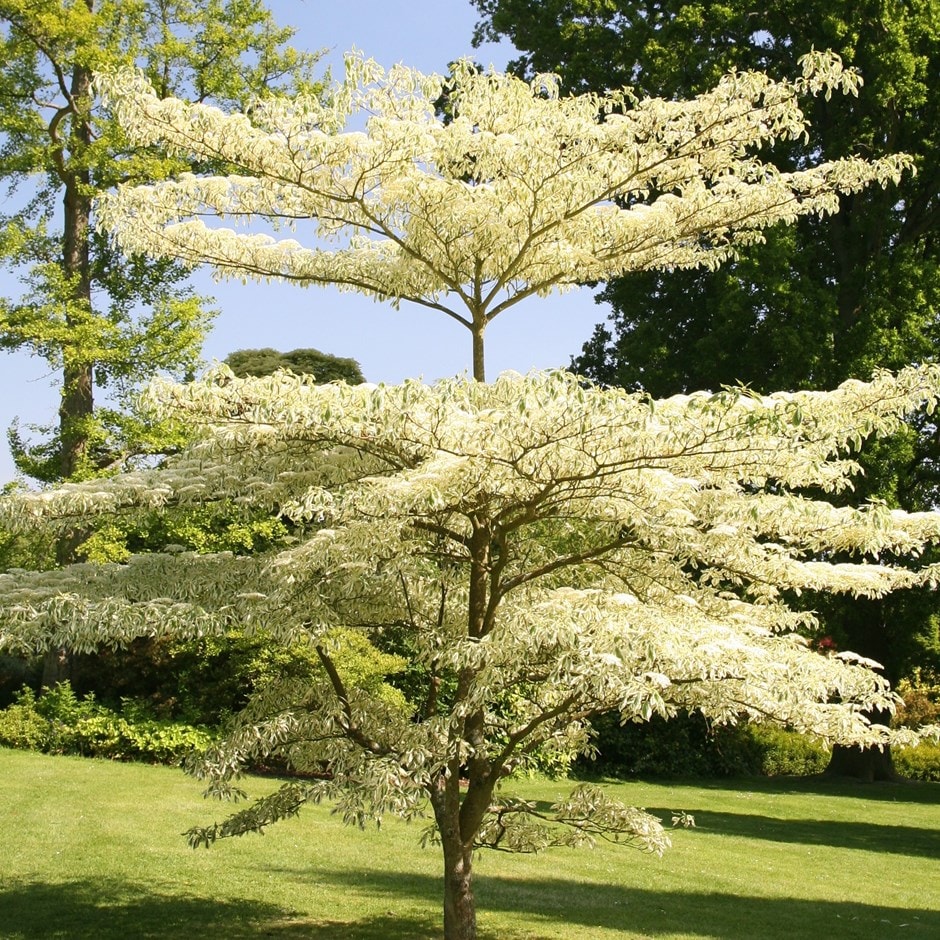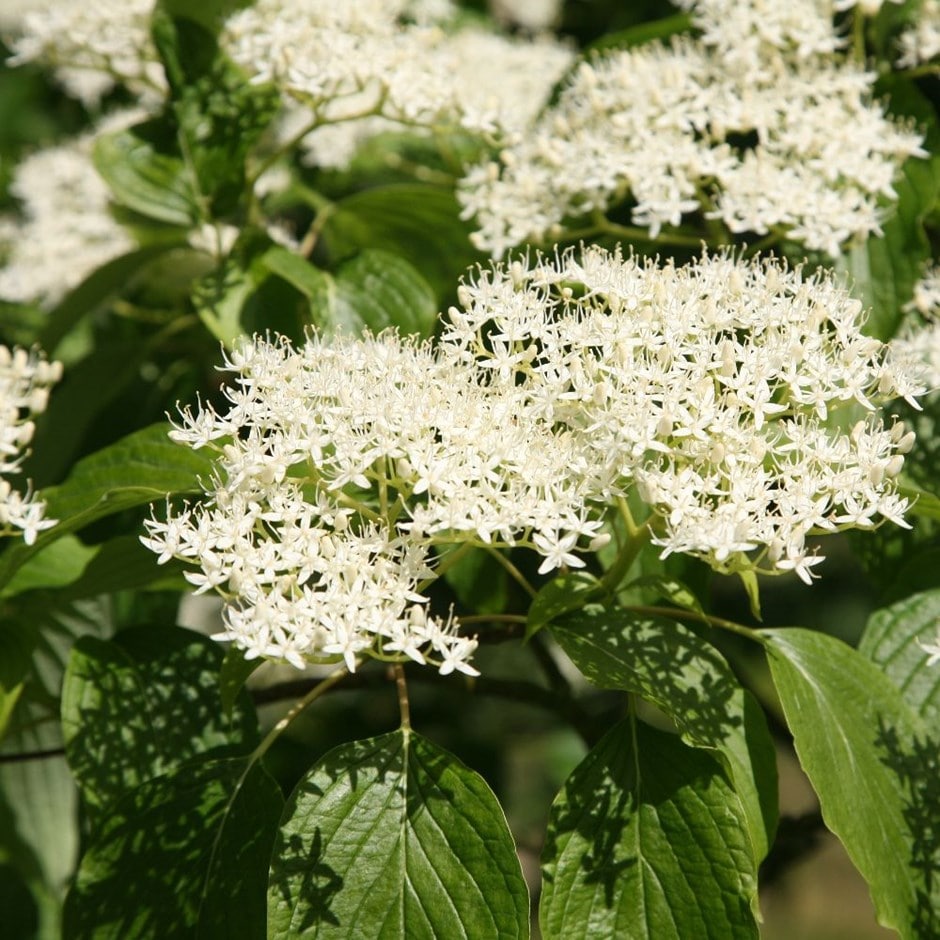“`html
Cornus Controversa: The Majestic Wedding Cake Tree
Cornus Controversa: The Majestic Wedding Cake Tree
Cornus controversa, commonly known as the Wedding Cake Tree or Giant Dogwood, is a captivating deciduous tree renowned for its distinctive tiered branching structure and elegant springtime blooms. This remarkable tree, native to East Asia, has earned a special place in gardens and landscapes worldwide, appreciated for its aesthetic appeal and adaptability. This comprehensive exploration delves into the various aspects of Cornus controversa, from its botanical characteristics and cultivation to its ecological significance and landscape uses.
Botanical Characteristics
Taxonomy and Nomenclature
Cornus controversa belongs to the Cornaceae family, a group of flowering plants known for their diverse forms and ornamental value. The genus Cornus encompasses a wide range of species, including shrubs and trees, all sharing certain botanical traits. The specific epithet “controversa” refers to the tree’s unique branching pattern, which often appears to contradict typical tree growth patterns.
Physical Description
The Wedding Cake Tree is a medium to large deciduous tree, typically reaching heights of 40 to 60 feet (12 to 18 meters) with a spread of 25 to 40 feet (7.5 to 12 meters). Its most striking feature is its horizontal, tiered branching, creating a layered appearance reminiscent of a wedding cake. The branches grow in distinct whorls, each tier progressively shorter than the one below, forming a broadly conical to rounded crown.
Leaves

The leaves of Cornus controversa are alternate, simple, and ovate to elliptic in shape, with a slightly wavy margin. They are typically 2 to 5 inches (5 to 12.5 cm) long and 1 to 3 inches (2.5 to 7.5 cm) wide. The upper surface of the leaves is a rich, dark green, while the underside is paler and slightly pubescent. In autumn, the foliage transforms into a vibrant display of red, orange, and purple hues, adding to the tree’s seasonal appeal.
Flowers
In late spring to early summer, Cornus controversa produces a profusion of small, creamy-white flowers borne in flat-topped cymes, or clusters, measuring 2 to 4 inches (5 to 10 cm) across. Each flower is composed of four petals and numerous stamens, creating a delicate, star-like appearance. The flowers are mildly fragrant and attract pollinators, including bees and butterflies.
Fruits

Following the flowering period, the tree develops small, spherical drupes, or berries, which ripen in late summer to early autumn. The fruits are initially green, turning bluish-black as they mature. They are not considered particularly palatable for human consumption but are readily eaten by birds, contributing to seed dispersal.
Bark and Twigs
The bark of Cornus controversa is smooth and gray-brown when young, becoming fissured and textured with age. The twigs are reddish-brown to purplish-brown, often with a glaucous bloom. The distinctive branching pattern is evident even in winter, when the tree is devoid of leaves, making it a striking feature in the landscape.
Cultivation and Care
Site Selection
Cornus controversa thrives in a sunny to partially shaded location with well-drained, fertile soil. It prefers slightly acidic to neutral soil pH. The tree is relatively tolerant of various soil types, including clay, loam, and sandy soils, provided they are not waterlogged. It is essential to choose a site with ample space to accommodate the tree’s mature size and branching habit.
Planting
The optimal time for planting Cornus controversa is in spring or autumn, when the soil is moist and temperatures are mild. Dig a planting hole twice as wide as the root ball and slightly shallower. Amend the soil with compost or well-rotted manure to improve drainage and fertility. Position the tree in the hole, ensuring the top of the root ball is level with the soil surface. Backfill the hole with soil, firming it around the roots. Water thoroughly after planting and apply a layer of mulch to retain moisture and suppress weeds.
Watering
Newly planted Cornus controversa trees require regular watering to establish a strong root system. Once established, the tree is relatively drought-tolerant but benefits from occasional deep watering during prolonged dry spells. Avoid overwatering, as this can lead to root rot.
Fertilization
Cornus controversa generally does not require heavy fertilization. A light application of a balanced fertilizer in early spring can promote healthy growth. Mulching with organic matter, such as compost or shredded bark, can also provide essential nutrients and improve soil structure.
Pruning
Minimal pruning is typically required for Cornus controversa. Pruning should focus on removing dead, damaged, or crossing branches to maintain the tree’s health and shape. The best time to prune is in late winter or early spring, before new growth begins. Avoid excessive pruning, as it can disrupt the tree’s natural tiered branching pattern.
Pest and Disease Management
Cornus controversa is generally resistant to pests and diseases. However, it can occasionally be affected by common problems such as aphids, scale insects, and powdery mildew. Regular inspection of the tree can help detect and address any issues early on. Integrated pest management practices, such as encouraging beneficial insects and using organic pesticides, can help minimize the impact of pests and diseases.
Ecological Significance
Habitat and Distribution
Cornus controversa is native to East Asia, including China, Japan, Korea, and Taiwan. It typically grows in mountainous regions, woodlands, and along stream banks. The tree is adapted to a wide range of climates, from temperate to subtropical, and can tolerate both cold winters and hot summers.
Wildlife Value
The flowers of Cornus controversa provide nectar for pollinators, including bees and butterflies, contributing to biodiversity. The fruits are an important food source for birds, which help disperse the seeds and promote natural regeneration. The tree’s dense foliage and branching structure also provide shelter and nesting sites for various wildlife species.
Soil Improvement
Cornus controversa contributes to soil health through its leaf litter, which enriches the soil with organic matter. The tree’s root system helps stabilize the soil and prevent erosion, particularly on slopes and along stream banks.
Landscape Uses
Specimen Tree
The distinctive tiered branching pattern and elegant springtime blooms of Cornus controversa make it an ideal specimen tree for gardens and landscapes. It can be planted as a focal point in lawns, near patios, or in woodland gardens, creating a striking visual impact.
Street Tree
Cornus controversa can be used as a street tree in wide boulevards and parks, providing shade and aesthetic appeal. Its moderate size and tolerance of urban conditions make it a suitable choice for urban landscapes.
Woodland Garden
The tree’s natural habitat preference makes it well-suited for woodland gardens, where it can be planted alongside other shade-tolerant plants. Its layered branching structure adds vertical interest and creates a sense of depth in woodland settings.
Naturalizing
Cornus controversa can be naturalized in large gardens and landscapes, allowing it to grow in a more informal, natural setting. Its ability to self-seed and establish in suitable conditions makes it a valuable addition to naturalized areas.
Seasonal Interest
Cornus controversa provides year-round interest with its distinctive branching pattern, springtime blooms, summer foliage, and vibrant autumn colors. Its seasonal transformations make it a dynamic and engaging element in the landscape.
Varieties and Cultivars
‘Variegata’
This cultivar features leaves with creamy-white margins, adding a touch of variegation to the tree’s foliage. It is a popular choice for gardens seeking a more colorful and visually appealing Cornus controversa.
‘Golden Variegata’
Similar to ‘Variegata,’ this cultivar features leaves with golden-yellow margins, creating a striking contrast against the green center. It is a vibrant and eye-catching addition to any landscape.
‘Pagoda’
This cultivar is characterized by its exceptionally horizontal branching pattern, creating a more pronounced tiered effect. It is a compact and well-shaped tree, suitable for smaller gardens.
Conclusion
Cornus controversa, the Wedding Cake Tree, is a truly remarkable tree that captivates with its unique branching structure, elegant blooms, and seasonal transformations. Its adaptability, ecological value, and aesthetic appeal make it a valuable addition to gardens and landscapes worldwide. By understanding its botanical characteristics, cultivation requirements, and landscape uses, gardeners and landscapers can fully appreciate and enjoy the beauty and benefits of this exceptional tree. Whether planted as a specimen tree, a street tree, or a naturalized element, Cornus controversa adds a touch of elegance and natural beauty to any setting.
“`
:max_bytes(150000):strip_icc()/gerber-daises-4121360-hero-bfd1a98e8bb44c45891b84d9df63b5ac.jpeg?resize=200,135&ssl=1)

